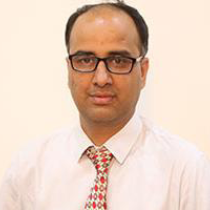
Dinesh C. Dobhal
Work place: Department of Computer Science and Engineering, Graphic Era Deemed to be University, Dehradun, India
E-mail: dineshdobhal@gmail.com
Website:
Research Interests:
Biography
Dinesh C. Dobhal, Ph.D, he is working as an Associate Professor in Department of Computer Science and Engineering in Graphic Era Deemed to be University, Dehradun. He had received his Ph.D. in 2017. He has more than 20 years of experience in teaching/research of UG and PG level degree courses as a Lecturer/Assistant Professor/ Associate Professor in various academic/research organizations. He has a vast experience in the area of teaching and research. He is an author of a number of research papers in SCOPUS indexed Journals/Conferences. His research interests are Cyber Security, Malware Analysis, Mobile Ad hoc Network and Software Engineering.
Author Articles
Performance Evaluation of Various Machine Learning Algorithms for User Story Clustering
By Bhawnesh Kumar Umesh Kumar Tiwari Dinesh C. Dobhal
DOI: https://doi.org/10.5815/ijmecs.2025.03.07, Pub. Date: 8 Jun. 2025
In agile development, user stories are the primary method for defining requirements. These days, managing user stories effectively is difficult because software projects typically contain a large number of them. A project can involve a large amount of user stories, which should be clustered into different groups based on their functionality’s similarity for systematic requirements analysis, effective mapping to developed features, and efficient maintenance. Unfortunately, the majority of user story clustering methods now in use require a great deal of manual work, which is error-prone and time-consuming. In this research, we suggest an automated framework that uses a family of machine learning algorithms to classify user stories. First, preprocessing the data is done in order to examine user stories and extract keywords from them. After that, features are taken out, which allow user stories to be automatically grouped into distinct categories. We use four feature extraction algorithms and six clustering algorithms. According to our experimental results, K-means and BIRCH clustering outperform other clustering methods, whereas cosine similarity and distance are the best feature extraction for user stories categorization to form the more balanced clusters as they both have the standard deviation is 3.08. In case of user stories cohesion, the silhouette coefficient value is 0.225 for spectral with (cosine similarity and cosine distance feature extraction) is best outcome than other clustering algorithms. The usefulness and applicability of the suggested framework are demonstrated by this study. Additionally, it offers some useful recommendations for enhancing the effectiveness of user stories clustering, for example through parameter adjustments for enhanced feature extraction and clustering.
[...] Read more.Other Articles
Subscribe to receive issue release notifications and newsletters from MECS Press journals